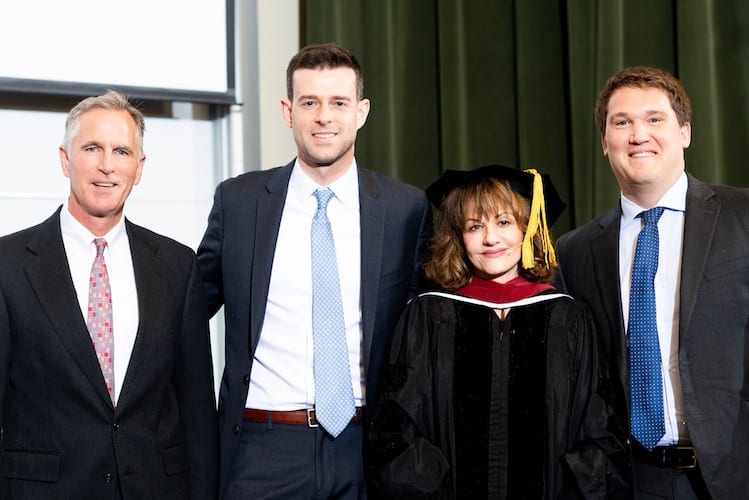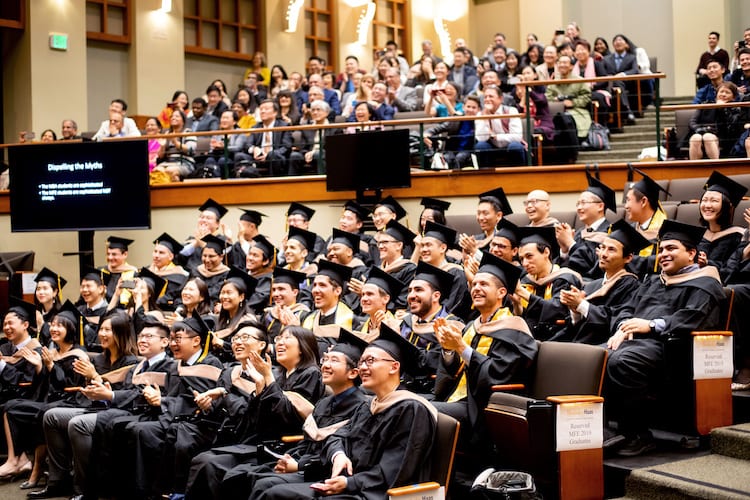
During his MBA orientation two years ago, Daniel Clayton heard something that grabbed his attention: if space was available, MBA students could enroll in data-intensive Master of Financial Engineering program classes like Financial Innovation, Dynamic Asset Management, Investments & Derivatives, and Behavioral Finance.
Clayton, MBA 19, jumped at the chance. “It was an awesome opportunity,” said Clayton, who is a CFA charterholder, and had worked in finance for six years before heading to Berkeley for his MBA. “I set the goal early that I should try to graduate with three or more of these courses to add more quantitative skills to my strong finance base. It’s the ‘quants’ who will be key to the future of the investment field by driving markets, developing new and innovative investment strategies, and disrupting decades-old industries.”
The top-ranked MFE program trains an elite group of students in financial engineering and data science, many who go on to work at top banks, tech companies, and startups. Since 2001, when the MFE program launched, a select number of its courses have opened up to MBA students to provide an opportunity to deepen their knowledge of quantitative finance and data analytics, preparing them for a job market that increasingly demands these skills, said Linda Kreitzman, executive director of the MFE program. On average, five MBA students take one or more courses each year.
“I saw this coming years ago and, in the future, the MBAs will need to be more data science savvy,” Kreitzman said. “It’s a critical need in the very near future; why we don’t have more MBA students taking our courses is quite surprising to me.”

For taking at least three MFE courses, Clayton was recognized along with Michael Bausback, also MBA 19, at the March 2019 MFE commencement.
The start of “a more studied experiment”
While the typical MBA student does not take the most quantitative and programming-intensive MFE classes such as Stochastic Calculus and Asset Backed Security Markets, they are able to enroll in the more qualitative courses.
In 2013, MBA student Benjamin Cooper fully capitalized on that opportunity. As a CJ White Finance Fellow, Cooper was matched with an alumnus as his mentor in his area of focus within finance, global asset allocation. “This was the start of a more studied experiment for MBAs taking MFE courses,” said William Rindfuss, executive director of strategic programs in the Haas Finance Group. “The mentor’s first bit of advice was to take as many MFE courses as possible. Ben wound up taking five MFE courses over his two years, and really kicked off this idea of MBAs leveraging the MFE program—literally under the same roof—to expand their training and set of opportunities in the more quantitative ends of finance.”
Cooper, MBA 15, now works as a multi-asset strategist at Wellington Management in London.
Exploring machine learning and quantitative finance
Bausback and Clayton shared similar goals in taking MFE courses: to challenge themselves in the quantitative side of finance.
Bausback, who worked in economic consulting before he came to Haas at a job that required financial modeling and knowledge of trading derivatives, took courses that would prepare him with a deeper, most up-to-date set of finance skills. “I now have the confidence to explore and interact with the fields of machine learning and quantitative finance, both of which seemed inaccessible prior to the program,” said Bausback, who will work at Morgan Stanley as an associate in its Tech Investment Banking office after graduating. “Coming out of the program I realize I had never fully appreciated how financial markets actually work, how prices are driven on a day-to-day basis—and how human biases affect that more than a math model will ever tell you.”
Clayton said he added the most value as a member of the MFE student teams by developing qualitative analysis based on data the MFE students crunched. “Once they coded everything I could interpret the results, articulate the findings clearly, and suggest additional analysis,” he said. “The MBA and MFE skill sets actually complement one another nicely.”
One of the biggest takeaways of taking MFE courses was learning to work with engineers, he said. “I still can’t code in Python or do Stochastic calculus but I do now know how to communicate with financial engineers and understand the kind of analysis they are capable of producing. In the future, I will have a better appreciation for what goes into this kind of work and what is possible, which will make me much more valuable in the finance world.”